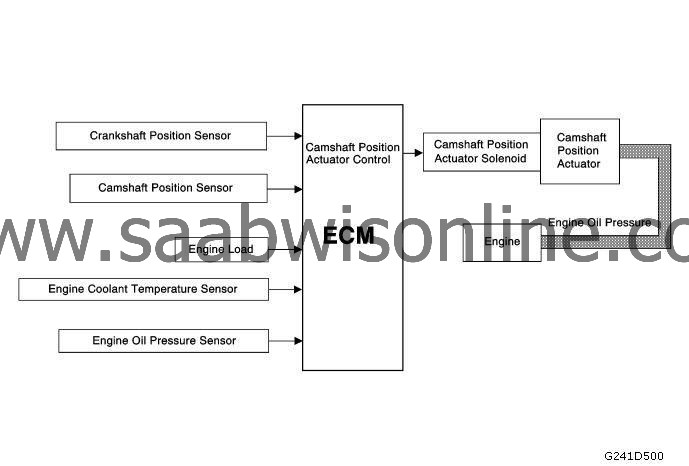Camshaft Actuator System Description
| Camshaft Actuator System Description |
| Camshaft Position (CMP) Actuator System |
The camshaft position (CMP) actuator system is an electro-hydraulic operated device used for a variety of engine performance and operational enhancements. These enhancements include lower emission output through exhaust gas dilution of the intake charge in the combustion chamber, a broader engine torque range, and improved fuel economy. The CMP actuator system accomplishes this by changing the angle or timing of the camshaft relative to the crankshaft position. The CMP actuator simply allows earlier or later intake and exhaust valve opening during the four stroke engine cycle. The CMP actuator cannot vary the duration of valve opening, or the valve lift.
During engine OFF, engine idling conditions, and engine shutdown, the camshaft actuator is held in the Park position. Internal to the CMP actuator assembly is a return spring and a locking pin. During non-phasing modes of the camshaft, the return spring rotates the camshaft back to the Park position, and the locking pin retains the CMP actuator sprocket to the camshaft.
| CMP Actuator System Operation |
The camshaft position (CMP) actuator system is controlled by the engine control module (ECM). The ECM sends a signal to a CMP actuator solenoid in order to control the amount of engine oil flow to a Cam Actuator passage. The pressurized engine oil is sent to unseat the locking pin, and to the vane and rotor assembly of the CMP actuator. There are 2 different passages for oil to flow through, a passage for cam advance and a passage for cam retard. The Cam Actuator is attached to a camshaft and is hydraulically operated in order to change the angle of the camshaft relative to crankshaft position (CKP). Engine oil pressure (EOP), viscosity, temperature and engine oil level can have an adverse affect on Cam Actuator performance.



